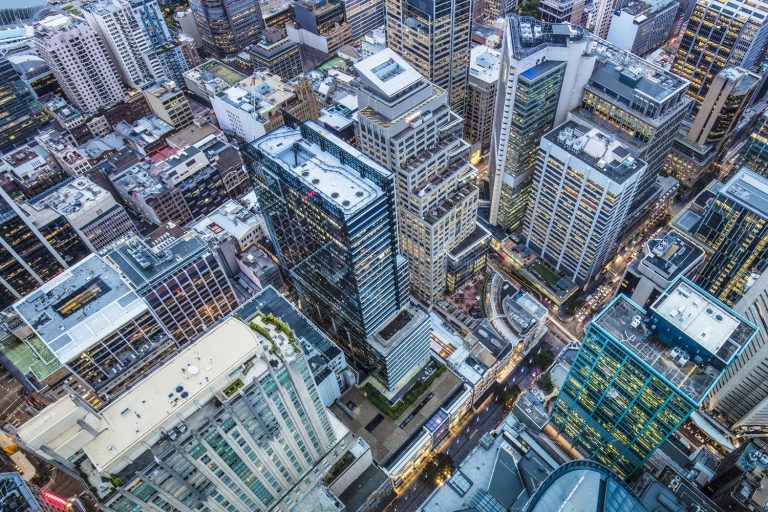Rent revolution: Landlords turn to residential plays

An artist’s impression of the build-to-rent apartment building at Brisbane Showgrounds in Queensland.
Hardly a week passes without an announcement from the surging build-to-rent sector.
What was once a sideline has become a favourite of institutions and developers.
It is now promising not only steady but even growing returns during an economic slowdown as the residential rental squeeze shows no signs of letting up.
Big local and offshore operators that have dominated the field have begun opening up their new towers and are also winning the battle for tenants even at premium prices. And now more of the biggest local commercial players locally are looking to get in on the act as they strive to get more out of their portfolios.
Big companies are already moving, with Lendlease developing a site in Brisbane, retail landlord Vicinity Centres indicating it wants to build new blocks next to malls, and Stockland exploring the area.

Goodman Group chief executive Greg Goodman. Picture: John Feder
The Australian can reveal that industrial powerhouse Goodman is looking to repurpose an office park on Sydney’s north shore into build-to-rent towers.
While it is only starting on planning, the opportunity shows where underused suburban offices may be headed. Goodman could look to repeat the premium site sales it made during the apartments boom to expand to developers.
“We’ve got some sites we’re rezoning at Macquarie Park for the build-to-rent sector,” Goodman chief executive Greg Goodman said. “We’ll get the planning and … there’s a lot of interest in that.”
The company won’t undertake projects on its own. “We’ll be looking to sell the sites we get planned and rezoned,” he said.
Goodman is starting with a corporate centre near the bustling Macquarie University that can hold five new buildings where a developer could undertake about 725 apartments, adding to the bulging pipeline in the sector.

Build-to-rent company Home has two buildings already open in Melbourne.
CBRE regional director, living sectors, Andrew Purdon said diversified property companies had recognised the strong drivers around the area. And he predicts that the influx of global pension funds into the area is likely to be followed by more of their ilk.
Surging migration into Australia is a major driver of interest. At the same time as the market is digesting an estimated 600,000 newcomers over three years ending 2024, traditional apartment construction has slumped.
“Looking at these remarkable demographic trends stimulates their interest in investment,” Mr Purdon said.
And existing companies often need an anchor for expensive new projects and ways to boost returns on their holdings. “It’s an extra outlet really for them in terms of the market,” Mr Purdon said.
Big capital is already pouring in.
Just this week developer and operator Assemble kicked off the building of 199 apartments at its second Assemble Futures build-to-rent-to-own project in Melbourne’s inner-city Kensington.

The Home Richmond build-to-rent project at 246 Church St in the Melbourne suburb of Richmond.
The project was the first in the Assemble Futures pipeline to get equity investment from the heavyweight AustralianSuper. The fund has also committed to the third Assemble Futures project in nearby Brunswick and backed Assemble in picking up three more Melbourne sites.
AustralianSuper head of property Bevan Towning said Assemble’s unique model was “helping to provide more Australians with an important pathway to home ownership while delivering on our purpose to help members to achieve their best financial position in retirement”.
Offshore players are also forging deeper into the sector. Sentinel Fund Manager Australia, the local arm of US player Sentinel, last month launched Kinleaf, a dedicated property management platform for its complexes in Australia.

An artist’s impression of the build-to-rent apartment building at Brisbane Showgrounds in Queensland.
The US giant is shooting for a $1.5bn portfolio and is already active in Perth, with another site bought there and one on the Gold Coast, with a Melbourne project also in the wings.
Kinleaf will be rolled out across Sentinel’s local operations, which has more than 1300 units in development or operation.
Sentinel Real Estate Corporation president Michael Streicker said the sector had matured.
“Now, our focus is on continuing to grow a national portfolio of premium and well-located rental communities that deliver greater housing choices for more Australians and strong, long-term returns for investors,” Mr Streicker said.
Melbourne has been a big focus as sites have been cheaper, with a series of deals struck last year and more in train. Experts believe it will remain the focus in the medium term
JLL head of capital markets, Victoria, Josh Rutman, said that as the challenges with housing affordability continued to mount, build-to-rent developers were actively purchasing large-scale inner-city sites to build substantial pipelines of apartments.
“We’ve seen significant escalation in residential rents which would appear to support the thesis behind the build-to-rent model, and Melbourne remains the epicentre of activity with several transactions either under negotiation or recently completed,” Mr Rutman said.

Home’s Christian Grahame.
The head of build-to-rent operator Home, Christian Grahame, is a pioneer of the sector. The company has two buildings already open in Melbourne. Mr Grahame points to improving fundamentals.
“There’s no doubt that conditions post Christmas, with immigration opening back up and vacancies being so low, have been significantly better than 2022,” Mr Grahame said. “We have experienced an increase in inquiry from students and also other expats and internationals coming into Melbourne.”
He says that now the market now has a range of completed buildings, the focus is on refining the product and the services. “In years to come you’ll see the market segment into a range of different offerings and different price points,” he said.
Despite the wave of towers planned, there would still be a shortage of units. “The market is big enough for a variety of competitors to be in there all at the one time,” Mr Grahame said.
He says big landlords are forming alliances with build-to-rent players. “We’re seeing synergies between retail and residential being highly complementary. And there will also be instances where asset owners will look to form their own BTR strategies,” he said.
Some builders will also turn to build-to-rent experts. “As the sector becomes more sophisticated and matures, we will see more of a variety of models and many of those groups will not operate their own assets,” Mr Grahame said.
He is bullish that, like commercial real estate, the local sector can be a global leader.
“There’s no reason why Australia can’t be a market that the rest of the world looks to for innovation in terms of product and attractiveness in terms of capital allocation,” he said.







